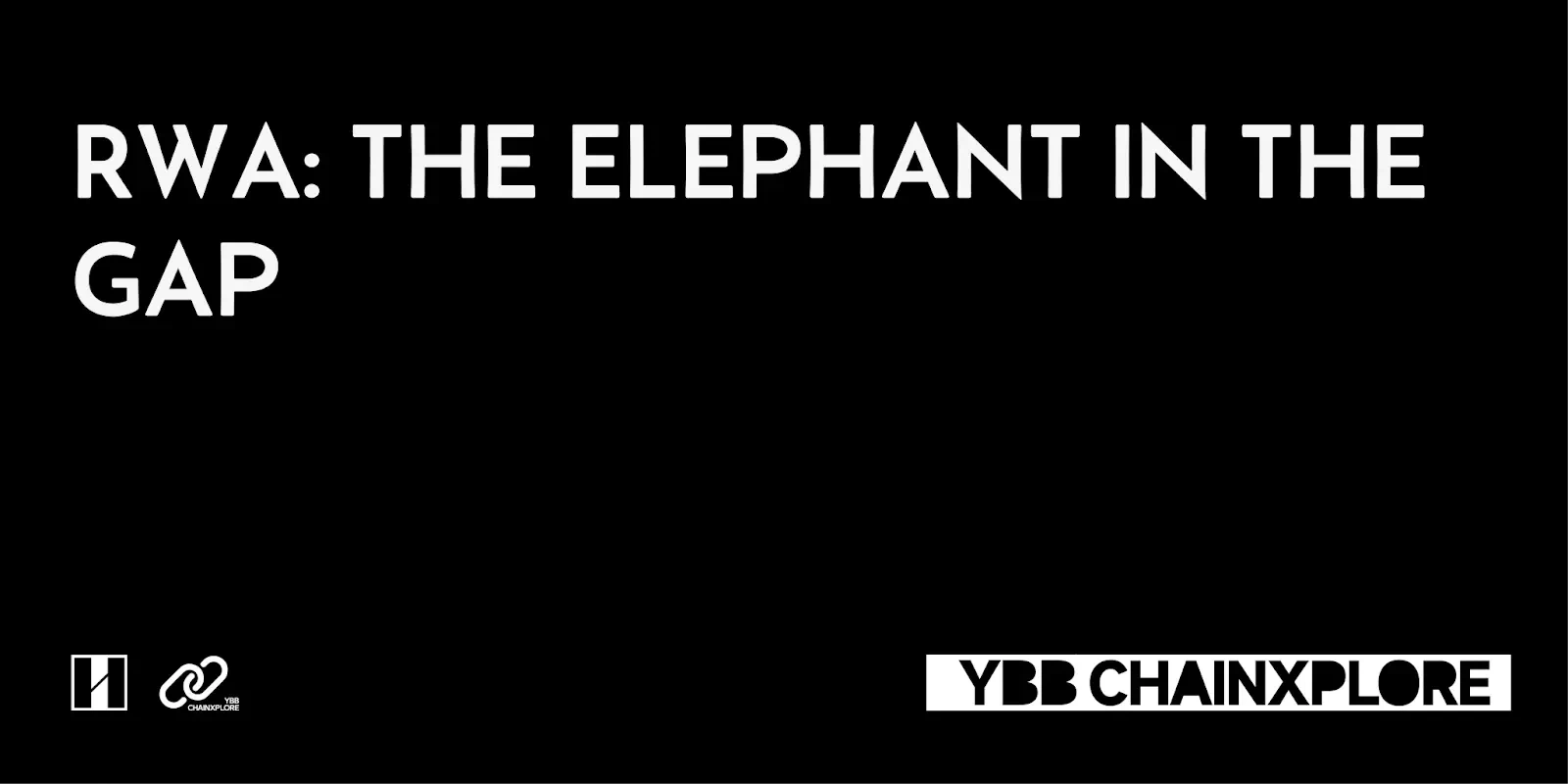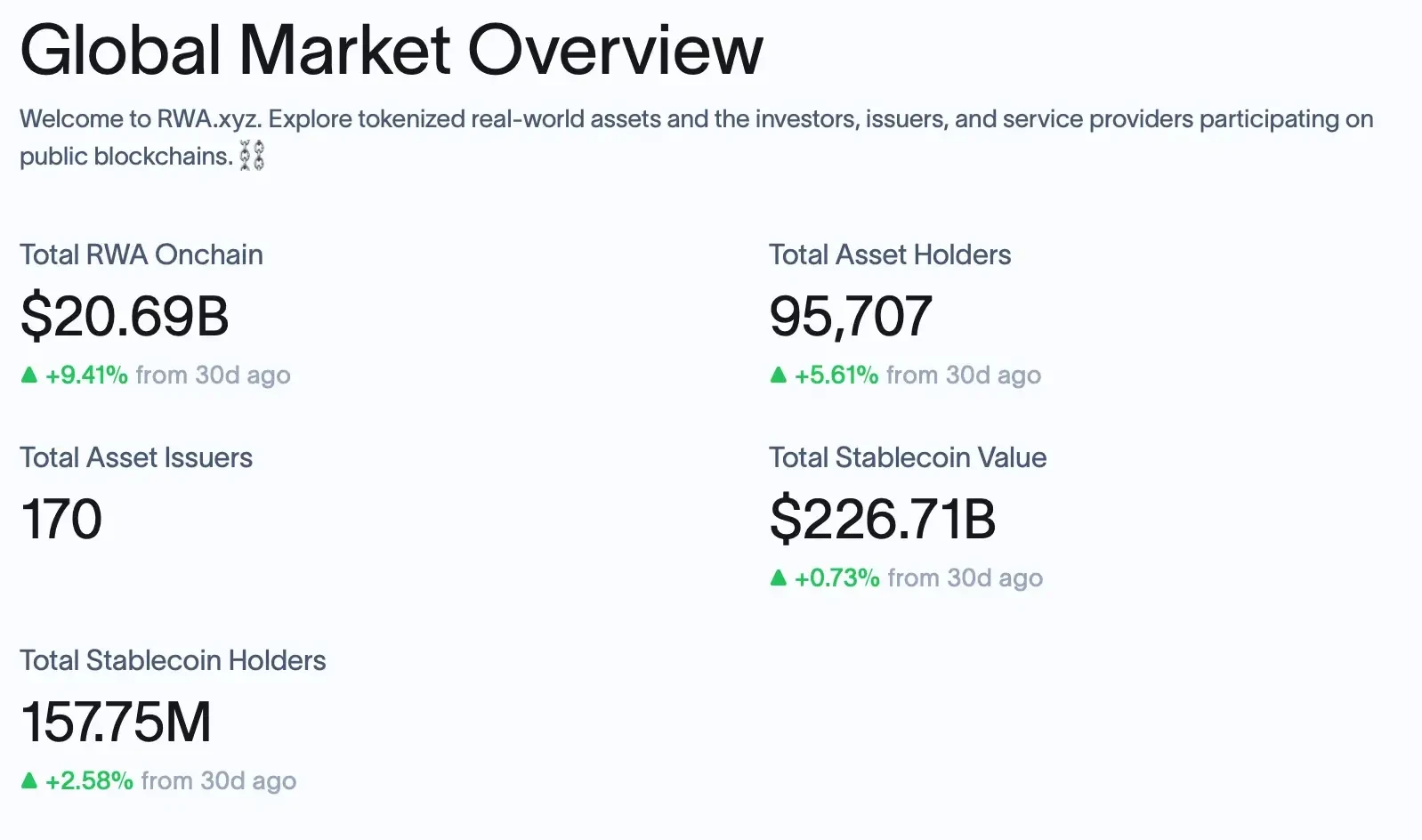Original Author: YBB Capital Researcher Zeke

Introduction
"The tokenization of real-world assets (RWA) aims to enhance liquidity, transparency, and accessibility, allowing a broader range of individuals to access high-value assets." This is Coinbase's explanation of the term RWA, and it is also a common interpretation in popular science articles about RWA. However, I find this statement unclear and not entirely accurate. In this article, I will attempt to interpret RWA from my personal perspective within the context of the current era.
I. The Broken Prism
The combination of crypto and real-world assets can be traced back to over a decade ago with Colored Coins on Bitcoin, which achieved "coloring" by adding metadata to Bitcoin UTXOs, endowing specific Satoshis with attributes representing external assets, thereby marking and managing real-world assets (such as stocks, bonds, and real estate) on the Bitcoin blockchain. This protocol, resembling BRC20, was humanity's first systematic attempt to realize non-monetary functions on the blockchain and also marked the beginning of blockchain's evolution towards intelligence. However, due to the limited opcode of Bitcoin scripts, the asset rules of Colored Coins had to be interpreted by third-party wallets, requiring users to trust these tools' logic for defining UTXO "colors." Centralized trust, combined with factors like insufficient liquidity, led to the initial concept validation of RWA ending in failure.
In the following years, blockchain pivoted with Ethereum, ushering in the era of Turing completeness. Various narratives have had their moments of frenzy, but RWA has remained largely underwhelming over the past decade, aside from stablecoins backed by legal assets. Why is this the case?
I still remember writing in an article about stablecoins that there has never been a true dollar on the blockchain. The essence of USDT or USDC is merely a "digital bond" issued by a private company, and USDT is theoretically much weaker than the dollar. The success of Tether actually stems from the blockchain world's urgent need for a stable medium of value that it cannot create.
In the world of RWA, there is no such thing as decentralization; trust assumptions must be built upon a centralized entity, and the risk management of this entity can only rely on regulation. The anarchistic essence inherent in crypto fundamentally contradicts this concept, as the underlying architecture of any public chain is designed to resist regulation. The difficulty of regulation existing on public chains is the primary reason RWA has never succeeded.

The second point is the complexity of assets. While RWA encompasses the tokenization of all physical assets, we can roughly categorize them into financial and non-financial assets. For financial assets, they inherently possess homogeneity, and the link between the underlying assets and tokens can be established under regulated custodial institutions. For non-financial assets, the issue becomes exponentially more complex, and the solutions largely depend on IoT systems, yet still cannot address sudden factors like human malfeasance and natural disasters. Therefore, in my understanding, RWA, as a prism of real-world assets, can only reflect a limited spectrum of light; for future non-financial assets to persist on-chain, they must meet the prerequisites of homogeneity and ease of valuation.
Thirdly, compared to the highly volatile digital assets, it is fundamentally difficult to find assets in the real world that exhibit comparable volatility. The dozens or even hundreds of APY in DeFi make TradFi look pale in comparison, and the low returns and lack of participation motivation represent another pain point for RWA.
Given this, why is the industry now refocusing on this narrative?
II. Policies from Above
As mentioned above, the advancement of regulation in TradFi is a key factor for the existence of RWA; the concept can only progress when trust assumptions are established. Currently, regions friendly to the development of Web3, such as Hong Kong, Dubai, and Singapore, have only recently rolled out relevant regulatory frameworks for RWA. Therefore, when this starting point emerges, the journey of RWA is just beginning. However, as it stands, fragmented regulation and TradFi's heightened vigilance towards risk still shroud this track in a layer of fog.
Here are the details of the regulatory frameworks for RWA in major jurisdictions worldwide as of April 2025:
United States:
Regulatory Bodies: SEC (Securities and Exchange Commission), CFTC (Commodity Futures Trading Commission)
Core Regulations:
Securities Tokens: Must pass the Howey Test to determine if they are securities, subject to registration or exemption provisions of the Securities Act of 1933 (e.g., Reg D, Reg A+).
Commodity Tokens: Regulated by the CFTC, with Bitcoin, Ethereum, etc., explicitly classified as commodities. Key Measures:
KYC/AML: BlackRock's BUIDL fund is only open to accredited investors (net worth ≥ $1 million), mandating on-chain identity verification (e.g., Circle Verite).
Expanded Securities Recognition: Any RWA involving dividends may be classified as securities. For example: SEC's penalty against the tokenized real estate platform Securitize (unregistered securities issuance in 2024).
Hong Kong:
Regulatory Bodies: HKMA (Hong Kong Monetary Authority), SFC (Securities and Futures Commission)
Core Framework:
The Securities and Futures Ordinance includes securities tokens under regulation, requiring compliance with investor suitability, information disclosure, and anti-money laundering requirements.
Non-securities tokens (e.g., tokenized commodities) are subject to the Anti-Money Laundering Ordinance.
Key Measures:
Ensemble Sandbox Program: Testing dual-currency settlement for tokenized bonds (HKD/offshore RMB), cross-border real estate collateral (in cooperation with the Bank of Thailand), with participating institutions including HSBC, Standard Chartered, AntChain, etc.;
Stablecoin Gate Policy: Only allows the use of stablecoins recognized by the HKMA (e.g., HKDG, CNHT), prohibiting unregistered tokens like USDT.
European Union:
Regulatory Body: ESMA (European Securities and Markets Authority)
Core Regulations:
MiCA (Markets in Crypto-Assets Regulation): Effective in 2025, requiring RWA issuers to establish EU entities, submit white papers, and undergo audits.
Token Classification: Asset-Referenced Tokens (ARTs), Electronic Money Tokens (EMTs), and other crypto assets.
Key Measures:
Liquidity Restrictions: Secondary market trading requires licensing, and DeFi platforms may be defined as "Virtual Asset Service Providers" (VASP).
Compliance Shortcuts: Luxembourg fund structures (e.g., Tokeny gold tokens) become low-cost issuance channels, with compliance costs for small RWA platforms expected to increase by 200%.
Dubai:
Regulatory Body: DFSA (Dubai Financial Services Authority)
Core Framework:
Tokenized Sandbox (launched in March 2025): Divided into two phases (intent application, ITL testing group), allowing testing of securities tokens (stocks, bonds) and derivative tokens.
Compliance Path: Exemptions from certain capital and risk control requirements, with a testing period of 6-12 months before applying for a formal license.
Advantages: Equivalent to EU regulation, supporting the application of Distributed Ledger Technology (DLT), reducing financing costs.
Singapore:
Securities tokens are included under the Securities and Futures Act, subject to exemption provisions (small issuances ≤ 5 million SGD, private placements ≤ 50 people).
Functional tokens must comply with anti-money laundering regulations, with MAS (Monetary Authority of Singapore) promoting pilot projects through sandboxes.
Australia:
ASIC (Australian Securities and Investments Commission) classifies RWA tokens that confer rights to income as financial products, requiring a financial services license (AFSL) and risk disclosure.
In summary, Western countries focus on compliance thresholds, while regions in Asia and the Middle East attract projects through experimental policies, yet compliance thresholds remain high. Therefore, the current state of RWA protocols is that they can exist on public chains but must be supplemented with various compliance modules to fit regulatory frameworks. These compliance protocols cannot directly interact with traditional DeFi protocols, and due to differences in jurisdictions, a protocol compliant with Hong Kong's framework cannot interact with compliant protocols in other regions. From the current situation, RWA protocols lack sufficient accessibility and are extremely deficient in interoperability, resembling "islands" that contradict the ideal form.
Is there really no path to reclaim decentralization within these frameworks? Not necessarily. Taking Ondo, a leading protocol in RWA, as an example, the team has built a lending protocol called Flux Finance, allowing users to use open tokens like USDC and restricted tokens like OUSG as collateral for loans. It issues a tokenized bearer note called USDY (a compound stablecoin), which avoids being classified as a security through a design involving a 40-50 day lock-up period. According to the SEC's Howey Test standards, securities must meet conditions such as "investment of money in a common enterprise, with profits to be derived from the efforts of others." The yield of USDY comes from the automatic compounding of underlying assets (like treasury bond interest), allowing users to passively hold it without relying on Ondo's active management, thus not meeting the "reliance on the efforts of others" criterion. Ondo further simplifies the circulation of USDY on public chains through cross-chain bridges, ultimately achieving a path for interaction with the DeFi world.
However, such a complex and non-reversible approach may not be the RWA we desire. Another key factor in the current success of legal-backed stablecoins is excellent accessibility, enabling low-threshold inclusive finance in the real world. RWA still requires collaboration between TradFi and project parties to explore how to first achieve interconnectivity within different jurisdictions and interact with the on-chain world within possible limits. Only then can it align with the common interpretation of the term RWA mentioned in the introduction.
III. Assets and Returns
According to data from rwa.xyz (a professional analysis site for RWA), the total value of on-chain RWA assets is currently $20.69 billion (excluding stablecoins), primarily composed of private credit, U.S. Treasury bonds, commodities, real estate, and stock securities.

In terms of asset categories, it is not difficult to see that RWA protocols primarily target traditional financial users rather than native DeFi users. Leading RWA protocols like Goldfinch, Maple Finance, and Centrifuge primarily cater to small and medium enterprises and institutional users. So why move this endeavor onto the blockchain? (The first four points are merely examples of the advantages of these protocols)
24/7 instant settlement: This is one of the pain points of traditional finance's reliance on centralized systems; blockchain provides a non-stop trading system. It also enables instant redemptions, T+0 disbursements, and other operations;
Geographic liquidity fragmentation: Blockchain is a global financial network, allowing small and medium enterprises in third-world countries to attract external investors' funds at minimal costs by bypassing local institutions;
Lowering Marginal Service Costs: By managing an asset pool through smart contracts, the cost of servicing 100 companies is almost the same as servicing 10,000 companies;
Serving Mining Companies and Small Exchanges: These enterprises generally lack traditional credit records, making it difficult to obtain loans from banking institutions. Through traditional supply chain finance logic, equipment and accounts receivable can be used for financing;
Lowering Entry Barriers: Although early successful RWA protocols were generally designed for enterprises, institutions, or high-net-worth individuals, many RWA protocols are now attempting to segment financial assets to lower the investment threshold for investors with the introduction of regulatory frameworks.
For Crypto, if RWA can succeed, it indeed possesses trillion-level imaginative potential. Beyond that, I believe RWAFi will eventually arrive. For DeFi protocols, the underlying assets will become more robust after incorporating tokens with real yields, while for native DeFi users, there will be new options in asset selection and combinations. Especially in today's world, characterized by geopolitical turmoil and economic uncertainty, some real-world assets may be a better low-risk choice than merely using US dollars for investment. Here, I provide some currently available RWA product options or potential future choices: for example, gold has increased by 80% from early 2023 to this month; the fixed deposit rates for rubles in Russia are 20.94% for 3 months, 21.19% for 6 months, and 20.27% for 1 year; energy assets in sanctioned countries are typically discounted by over 40%; short-term U.S. Treasury yields are between 4%-5%; various stocks on the Nasdaq that have halved may have better fundamentals than your altcoins; and even more niche options like charging stations or Pop Mart's blind boxes could be good choices.
IV. The Swordbearer
In the world of "The Three-Body Problem," Luo Ji uses his own life as a trigger mechanism to deploy nuclear bombs in the solar orbit, constructing a deterrent system against the Trisolaran civilization using the Dark Forest theory. In the human world, he is the swordbearer of Earth.

The "Dark Forest" is also a nickname for blockchain among many insiders, representing the inherent "original sin" of decentralization. In certain special fields, RWA may serve as the swordbearer of this parallel world. Although the stories of PFP avatars and GameFi have now turned to bubbles, recalling the frenzied era three to four years ago, we once birthed projects like Bored Apes, Azuki, and Pudgy that rival traditional IPs. But did we really purchase IP intellectual property? The fact is, we never did. NFTs, to some extent, resemble consumer goods; the blockchain's definition of 10K PFPs is quite vague. It indeed created some momentarily brilliant IPs by lowering investment thresholds, but in terms of returns and project development, the "Trisolarans" monopolized power.
Taking Bored Apes as an example, the original intellectual property rights of Bored Apes clearly belong to its issuer, Yuga Labs LLC. According to the user agreement and official website information, Yuga Labs, as the project operator, holds the copyright, trademark rights, and other core intellectual property rights of Bored Apes. Holders purchasing NFTs only gain ownership and usage rights to specific numbered avatars, not the copyright itself.
In terms of decision-making, Yuga Labs has designed the Bored Apes' trajectory towards the Metaverse, generating funds through the infinite issuance of sub-IP, thus departing from the original luxury narrative. In this regard, NFT holders have no right to be informed, no decision-making power, and no rights to profits. In the traditional world, when investing in an IP, investors typically have direct usage rights, direct profit distribution, decision-making participation, and even development leadership.
Yuga Labs is at least a standout among PFP projects, and there have been many NFT projects with even more chaotic rights distribution. When a giant sword hangs over their heads, will they choose to respect their community more?
V. On the Carrier
In summary, RWA has the potential to reshape finance while bringing opportunities from the real world onto the blockchain, possibly providing a new path to rectify the chaos in blockchain. However, constrained by the current regulatory framework of TradFi, its form still resembles a private protocol existing on public chains, unable to unleash the highest imaginative potential. As time progresses, I hope for a guide or alliance to break through this barrier.
The light that assets can release on different carriers is truly unimaginable. From the bronze inscriptions of the Western Zhou period to the fish scale albums of the Ming Dynasty, asset rights assurance has guaranteed social stability and development. What would the final form of RWA look like? I could buy Nasdaq stocks during the day in Hong Kong, deposit money into the Russian Federal Savings Bank at midnight, and the next day invest in real estate in Dubai alongside hundreds of shareholders worldwide, none of whom know each other's names.
Yes, a world operating on a vast public ledger is RWA.
免责声明:本文章仅代表作者个人观点,不代表本平台的立场和观点。本文章仅供信息分享,不构成对任何人的任何投资建议。用户与作者之间的任何争议,与本平台无关。如网页中刊载的文章或图片涉及侵权,请提供相关的权利证明和身份证明发送邮件到support@aicoin.com,本平台相关工作人员将会进行核查。




